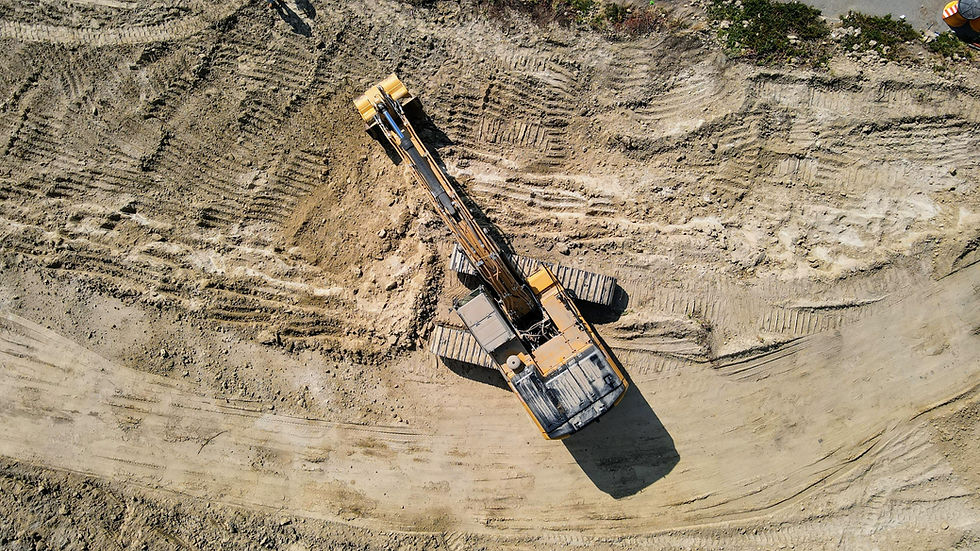Exploring the Future of Sustainable Mining Practices in 2025 Beyond Compliance
- marketingteam676
- May 12
- 4 min read
Sustainable mining practices are rapidly becoming essential within the mining industry, especially as regulations continue to evolve. As we move toward 2025, mining companies find themselves at a crossroads. The industry has long been focused on compliance with laws and regulations, but the future demands a more proactive approach. This post explores the innovative strategies and technologies that will shape sustainable mining practices in 2025 and beyond.
Understanding Sustainable Mining
Sustainable mining refers to the extraction and processing of minerals in a way that is environmentally responsible, socially equitable, and economically viable. The goal is to minimize negative impacts on the environment, improve community relations, and ensure that mining contributes positively to local economies.
It is essential to lay a solid foundation before diving into future practices. Historically, mining has been associated with significant environmental degradation, including deforestation, pollution, and substantial ecological disruption. However, the growing awareness of these issues has spurred the industry to seek sustainable solutions.
Regulatory Frameworks
As of 2023, existing regulations provide a baseline for compliance, focusing largely on environmental protection and community engagement. However, looking ahead to 2025, mining companies will need to move beyond mere compliance. New regulations are expected to incorporate stricter environmental standards, requiring companies to actively pursue sustainable practices rather than simply meet legal obligations.
The focus will shift towards sustainability certifications, which could be part of mining licenses. Companies that embrace these regulations will find themselves better positioned in the increasingly eco-conscious global market.

Technological Innovations
Remote sensing technology and big data analytics are paving the way for smarter, more efficient mining operations. From geological surveys to environmental monitoring and machinery management, technology will play a crucial role in optimizing mining processes.
In 2025, we can expect to see advancements in automation and artificial intelligence (AI), which will enhance productivity while minimizing environmental impacts. Automation will not only improve safety but will also allow for more accurate estimation of resources, reducing over-extraction.
Furthermore, green technologies such as bioleaching and hydrometallurgy are gaining traction. These methods employ microorganisms and environmentally friendly solvents to extract metals, significantly reducing the use of harmful chemicals.
Community Engagement and Social License to Operate
A significant aspect of sustainable mining is securing a social license to operate. This goes beyond obtaining the necessary permits from regulatory authorities; it involves relationship-building with local communities.
In 2025, companies will need to adopt a more inclusive approach, actively involving local populations in decision-making processes. This can lead to mutually beneficial outcomes, where communities are empowered, and mining companies gain the support they need to operate without opposition.
Building trust and transparency will be essential. Companies should invest in local infrastructure projects, community services, and training programs that bolster skills and employment. The goal is not merely to extract resources but to create a positive legacy.
Sustainable Resource Management
Efficient resource management is crucial for the long-term viability of mining operations. Companies will need to focus on lifelong resource management strategies that emphasize recycling and reuse.
For instance, utilizing more sustainable materials in the production of mining equipment can reduce the environmental footprint. Additionally, mining operations themselves can work towards reducing waste through the adoption of circular economy practices, where by-products from one process become the input for another.
In 2025, the continued emphasis on energy efficiency will also be crucial. Mining operations will adopt renewable energy sources, such as solar and wind, to offset their carbon footprints, providing a threefold benefit of cost savings, community goodwill, and environmental sustainability.

Emphasis on Biodiversity
The impact of mining on biodiversity has drawn considerable scrutiny. By 2025, sustainable mining practices will strategically incorporate biodiversity considerations into every phase of operation.
It will become increasingly necessary for mining companies to carry out comprehensive biodiversity assessments before commencing operations. Ensuring habitats are preserved and maintaining ecological balance will be paramount; this might include creating wildlife corridors or rehabilitating native flora.
In addition, companies will be expected to engage in biodiversity offsetting programs, where they commit to restoring natural habitats elsewhere to compensate for any ecological damage caused by mining activities.
Collaboration and Partnership
Collaboration will be key in transitioning towards sustainable mining practices by 2025. Mining companies will benefit from partnering with governments, NGOs, academic institutions, and local communities.
Engaging in collaborative efforts can also lead to shared resources and knowledge exchange, driving innovation. Successful partnerships can result in pilot projects that test new sustainable techniques in real-world mining operations.
Moreover, multi-stakeholder initiatives will foster transparency and collective responsibility, as all parties will have a vested interest in thriving ecosystems.
Continuous Improvement and Future Outlook
Sustainable mining will evolve into a continuous improvement model by 2025. Companies will leverage feedback mechanisms to assess their practices regularly, ensuring they align with sustainability goals.
Investing in research and development will remain essential as the industry adapts to changing environmental conditions and social expectations. The insights gained can lead to groundbreaking advancements that not only improve operational efficiency but also carve pathways for sustainable growth.
As more mining companies integrate sustainable practices, the data generated can help refine techniques across the industry. Consequently, a cycle of improvement will emerge, benefitting both the environment and mining practices worldwide.
Conclusion
The journey toward sustainable mining practices is not merely a compliance issue; it is a broader commitment to ensuring future generations can enjoy natural resources without compromising the environment. As we approach 2025, the industry must embrace innovation, collaboration, and community involvement to redefine what it means to operate responsibly.
Moving beyond compliance embraces an ethos of stewardship and shared responsibility. It’s about creating a sustainable future for the mining industry, where both economic viability and environmental integrity coexist harmoniously.
In the coming years, the mining sector will emerge as a leader in sustainability, demonstrating that resource extraction and environmental conservation can indeed go hand in hand.




Comments